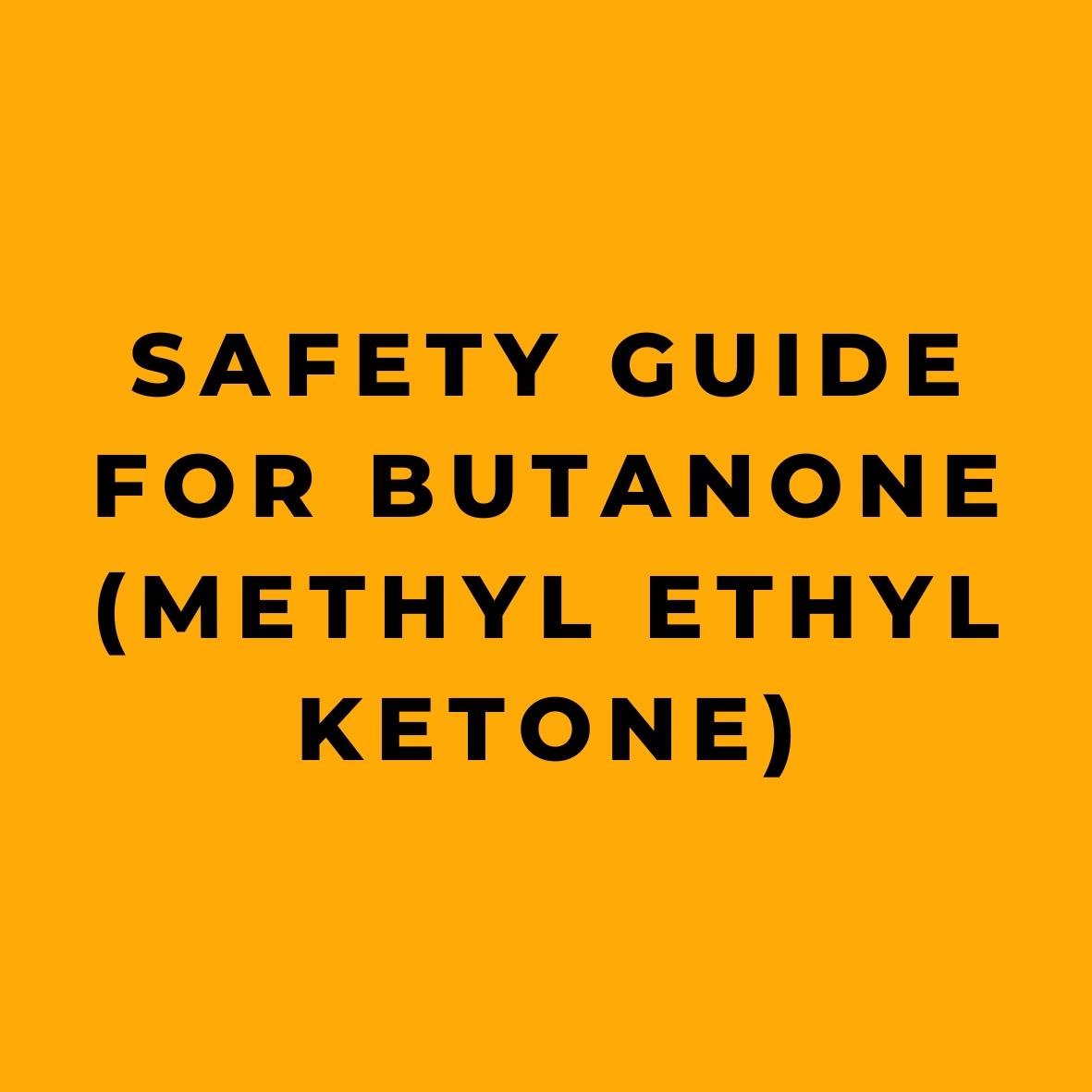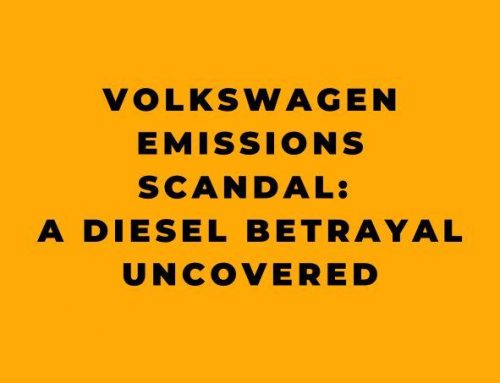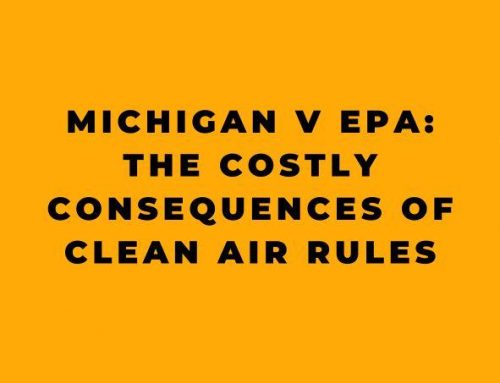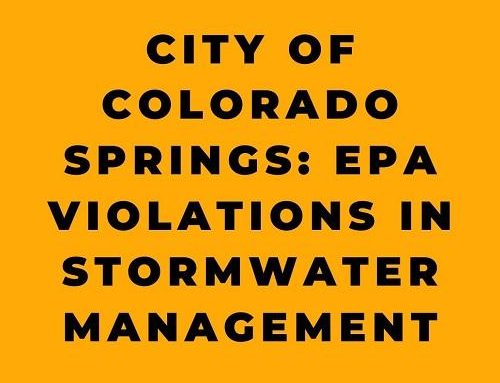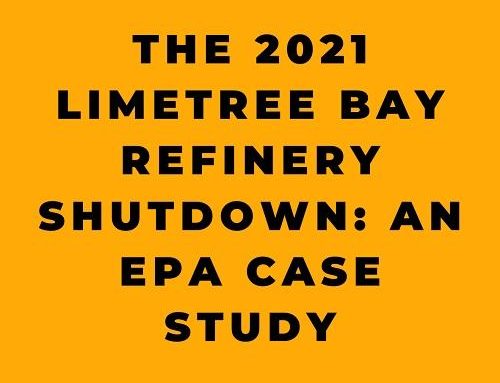Introduction
Butanone, also known as methyl ethyl ketone (MEK), is a colorless, flammable liquid widely used across various industries as a solvent and a component in the manufacture of synthetic rubber, paraffin wax, and other chemical products. Due to its numerous applications, it is essential for workers and employers to understand the potential risks associated with butanone exposure and take appropriate measures to ensure safety in the workplace. In this article we will delve into the chemical properties, potential health hazards, and best practices for handling and working with butanone to minimize risk and maintain a safe work environment.
Workers in various industries, such as printing plants, synthetic rubber manufacturing, and shoe and sporting goods factories, may be at risk of butanone exposure. This chemical can cause adverse health effects through inhalation, ingestion, or contact with the eyes and skin. Short-term exposure to butanone may result in symptoms like headache, dizziness, and irritation of the eyes, nose, and throat, while long-term exposure can lead to skin dryness and irritation. To safeguard workers from the potential dangers of butanone, it is crucial to establish a medical surveillance program and implement safety controls, such as local exhaust ventilation systems and personal protective equipment (PPE).
This guide will provide you with a wealth of information on butanone, from its chemical properties and exposure limits to recommended medical practices, monitoring and measurement procedures, and personal protective equipment requirements. Furthermore, the article will cover sanitation measures, common operations involving butanone, emergency first aid procedures, and spill and leak management techniques. By understanding and implementing the safety measures and best practices outlined in this guide, employers and workers can minimize the risk of butanone exposure and maintain a safe, healthy work environment.
NIOSH suggests that employers use Hierarchy of Controls to reduce the risk of injuries. If your industry uses methyl ethyl ketone, you must read the chemical labels and the accompanying Safety Data Sheets for hazard information. Visit NIOSH’s page on Managing Chemical Safety in the Workplace to learn more about controlling chemical workplace exposures.
What is Butanone or Methyl Ethyl Ketone?
2-Butanone, also known as methyl ethyl ketone (MEK), is an organic solvent widely used in various industries, including paint and coating manufacturing, adhesive production, and as a chemical intermediate. Due to its numerous applications, it is crucial to understand the safety measures and handling procedures for this chemical. This guide will provide information on the warning properties, exposure limits, health hazards, recommended medical practices, monitoring and measurement procedures, personal protective equipment, sanitation, common operations, emergency first aid procedures, spill and leak management, and waste removal and disposal for 2-butanone.
Butanone (Methyl Ethyl Ketone) Applications in Industry
Production
One way to produce butanone is by oxidizing 2-butanol. This process is catalyzed by copper, zinc, or bronze, and results in the production of around 700 million kilograms of butanone annually. There are other methods, like the Wacker oxidation of 2-butene and the oxidation of isobutylbenzene, which are similar to acetone production, but they haven’t been implemented on an industrial scale.
You can also modify the cumene process to produce phenol and a mixture of acetone and butanone instead of just phenol and acetone. Additionally, butanone can be extracted from mixed oxygenate streams resulting from liquid-phase oxidation of heavy naphtha and the Fischer–Tropsch reaction.
As a solvent
Butanone is a popular solvent used in processes involving gums, resins, cellulose acetate, nitrocellulose coatings, and vinyl films. It’s found in the manufacture of plastics, textiles, paraffin wax, household products like lacquer, varnishes, paint removers, glues, and cleaning agents. It has similar solvent properties to acetone but with a higher boiling point and a slower evaporation rate. Unlike acetone, it forms an azeotrope with water, making it useful for azeotropic distillation in certain applications. You’ll also find it in dry erase markers as the solvent for the erasable dye.
As a plastic welding agent
Since butanone dissolves polystyrene and many other plastics, it’s sold as “model cement” for connecting parts of scale model kits. Although it’s often considered an adhesive, it actually functions as a welding agent in this context.
Other uses
Butanone is a precursor to methyl ethyl ketone peroxide, a catalyst for some polymerization reactions like crosslinking unsaturated polyester resins. It’s also used in the preparation of dimethylglyoxime and as a starting chemical in the peroxide process for producing hydrazine.
Health Hazard Information
2-Butanone can cause adverse health effects following exposure via inhalation, ingestion, dermal, or eye contact. Animal studies have shown that acute inhalation can lead to narcosis, corneal opacities, emphysema, congestion in the brain, lungs, liver, and kidneys, and death. Inhalation by pregnant rats caused reduced lengths and weights in offspring.
General Description of Health effects
Butanone is a chemical commonly used in industrial applications, including adhesives, paints, and coatings. It’s even a constituent of tobacco smoke. While it’s a useful compound, it can also be an irritant, causing discomfort to the eyes and nose when we come into contact with it. Now, it’s important to note that severe health effects in animals have only been observed at very high levels of exposure. There aren’t any long-term studies involving animals breathing or ingesting butanone, and there’s no solid evidence showing it as a carcinogen.
That being said, there is some indication that butanone can increase the toxicity of other solvents when combined. So, if you’re working with a mixture of chemicals, the overall exposure risk may not be as simple as adding up the individual exposures. It’s always better to err on the side of caution when dealing with chemical mixtures.
As of 2010, the United States Environmental Protection Agency (EPA) classified butanone as a toxic chemical. Some neuropsychological effects have been reported, and it’s worth noting that butanone is rapidly absorbed through undamaged skin and lungs. In addition, it contributes to the formation of ground-level ozone – something that’s toxic even at low concentrations.
Now, before you start panicking about the butanone apocalypse, keep in mind there are regulations in place to help protect us. Butanone is listed as a Table II precursor under the United Nations Convention Against Illicit Traffic in Narcotic Drugs and Psychotropic Substances. This means that the production and distribution of butanone are monitored to prevent its misuse in the production of illegal drugs.
In the United States, butanone was once regulated as a hazardous air pollutant due to its classification as a volatile organic compound (VOC) contributing to the formation of ground-level ozone. In 2005, the EPA removed butanone from the list of hazardous air pollutants (HAPs). The reason? Research indicated that it did not pose a significant threat to public health or the environment at typical exposure levels. However, it’s essential to remember that regulations can change as new information becomes available, so it’s crucial to stay informed and up-to-date on the latest safety guidelines.
Signs and Symptoms of Exposure
Short-term (acute) exposure: Symptoms may include headache, dizziness, drowsiness, vomiting, numbness of extremities, and irritation of the eyes, nose, and throat.
Long-term (chronic) exposure: Chronic exposure can result in dryness and irritation of the skin.
Recommended Medical Practices
Medical Surveillance Program
A medical surveillance program should focus on the education of employers and workers about work-related hazards, placement of workers in jobs that do not jeopardize their safety and health, early detection of adverse health effects, and referral of workers for diagnostic confirmation and treatment. The program should involve the systematic collection and epidemiologic analysis of relevant environmental, biologic monitoring, medical screening, morbidity, and mortality data. This information will help determine the relationship between adverse health effects and occupational exposure.
Preplacement Medical Evaluation
Before assigning a worker to a job with potential exposure to 2-butanone, a thorough medical, environmental, and occupational history should be conducted. This evaluation should focus on the function and integrity of the eyes, skin, liver, kidneys, and nervous and respiratory systems. The worker’s baseline health status should be documented to detect and assess preexisting or concurrent conditions that may be aggravated or result in increased risk when exposed to 2-butanone.
Periodic Medical Screening and Biologic Monitoring
Regular occupational health interviews and physical examinations should be conducted to identify any excessive decrease or adverse trend in the physiological function of the eyes, skin, liver, kidneys, and nervous and respiratory systems compared to the baseline status of the individual worker or to expected values for a suitable reference population. Standardized questionnaires and tests of lung function recommended by NIOSH and the American Thoracic Society (ATS) should be used and interpreted according to standardized procedures and evaluation criteria.
Medical Practices at Job Transfer or Termination
The medical, environmental, and occupational history interviews, physical examination, and selected physiologic and laboratory tests conducted at the time of placement should be repeated at the time of job transfer or termination. Any changes in the worker’s health status should be compared to those expected for a suitable reference population.
Sentinel Health Events
Acute sentinel health events (SHE) related to 2-butanone exposure include contact and allergic dermatitis.
Monitoring and Measurement Procedures
TWA Exposure Evaluation
In order to determine worker exposure to 2-butanone, measurements should be taken so that the TWA exposure is based on a single, entire work shift sample or an appropriate number of consecutive samples collected during the entire work shift. In certain situations, it may be necessary to collect several short-term interval samples (up to 30 minutes each) to determine the average exposure level. Air samples should be collected in the worker’s breathing zone, which is the air that most closely represents the air inhaled by the worker.
Sampling and Analytical Method
The collection and analysis of 2-butanone vapors can be performed using charcoal tubes, followed by desorption with carbon disulfide and analysis by gas chromatography. Detector tubes or other direct-reading devices calibrated to measure 2-butanone can also be utilized if available. The NIOSH Manual of Analytical Methods (method number 2500) provides a detailed sampling and analytical method for 2-butanone.
Personal Protective Equipment (PPE)
The selection of Chemical Protective Clothing (CPC) should be based on available performance data, consultation with the manufacturer, and evaluation of the clothing under actual use conditions. Workers must be provided with and required to use CPC, gloves, face shields (minimum 8-inch), and other appropriate protective clothing to prevent skin contact with 2-butanone. Splash-proof goggles should also be provided and required to use in situations where 2-butanone may come into contact with the eyes.
Sanitation Measures
Clothing contaminated with 2-butanone should be removed immediately and placed in closed containers for storage until it can be discarded or until provisions are made for the removal of 2-butanone from the clothing. In cases where the clothing is laundered or cleaned, the person performing the operation should be informed of 2-butanone’s hazardous properties. Change and shower rooms should have separate locker facilities for street and work clothes. Skin that becomes contaminated with 2-butanone should be promptly washed with soap and water.
Work Area Regulations
The storage, preparation, dispensing, or consumption of food or beverages, storage or application of cosmetics, storage or smoking of tobacco or other smoking materials, or storage or use of products for chewing should be prohibited in work areas. Workers handling 2-butanone must wash their faces, hands, and forearms thoroughly with soap and water before eating, smoking, or using toilet facilities.
Common Operations and Controls for 2-Butanone:
- Spray application of vinyl and acrylic coatings; mixing of dye solutions; laboratory use:
Safety Control Measures:
To minimize the risk of exposure to 2-butanone, the following safety controls should be implemented in the workplace:
- Local exhaust ventilation systems should be installed to remove fumes and vapors from the work area, thus reducing the concentration of 2-butanone in the air.
- Dilution ventilation can be used as an additional control measure, along with local exhaust ventilation, to further reduce the concentration of airborne contaminants.
- Personal protective equipment (PPE), such as gloves, goggles, and respiratory protection, should be provided to workers handling 2-butanone to minimize direct contact with the chemical.
Emergency First Aid Procedures
In case of an emergency involving 2-butanone, follow these first aid procedures:
Eye Protection and First Aid:
In work environments where eye exposure to 2-butanone is possible, an eye-wash fountain must be readily available for immediate use in case of an emergency. If contact occurs, flush the affected eyes with copious amounts of water for at least 15 minutes, gently lifting the upper and lower eyelids intermittently. Seek medical attention as soon as possible. Avoid wearing contact lenses while handling 2-butanone to minimize risks.
Skin Protection and Decontamination:
In situations where skin exposure to 2-butanone is likely, ensure that quick-drenching facilities are accessible within the immediate work area for emergency use. If the chemical comes into contact with the skin, immediately wash the area with soap and water. If clothing becomes contaminated, remove it promptly and cleanse the affected skin with soap and water. Seek medical attention without delay.
Emergency Rescue Protocols:
Emergency Rescue
In the event that a worker becomes incapacitated due to exposure to a hazardous substance, it is crucial to move the affected individual away from the source of exposure promptly. Implement the established emergency rescue procedures and ensure that you are familiar with the facility’s rescue protocol and the location of rescue equipment. Avoid becoming a casualty yourself by following these procedures and staying alert.
Spills and Leaks
Workers who are not equipped with appropriate protective gear should be kept away from areas where spills or leaks have occurred until the cleanup is complete. In the event of a 2-butanone spill or leak, adhere to the following steps:
- Eliminate all potential ignition sources in the area to minimize the risk of fire or explosion.
- Ensure proper ventilation in the affected area to dissipate any hazardous fumes or vapors.
- For small quantities of 2-butanone-containing liquids, use absorbent materials such as paper towels to soak up the spill, then place the saturated towels in an appropriate container. Allow sufficient time for the vapors to evaporate in a safe location, such as a fume hood, ensuring that the hood ductwork is free of 2-butanone vapors. Safely incinerate the paper towels in an appropriate location away from combustible materials.
- For large quantities of 2-butanone-containing liquids, use absorbent materials such as vermiculite, dry sand, or earth to contain the spill. Transfer the saturated absorbent material to an appropriate container for disposal. Prevent 2-butanone from entering confined spaces, such as sewers, to avoid the risk of explosion.
- If vacuuming is employed for collecting 2-butanone-containing liquids, utilize an appropriate vacuum system with proper safety features. Ensure that no ignition sources are present near the spill area and that flashback prevention devices are in place.
Waste Removal and Disposal
When handling the removal, transportation, and disposal of waste materials containing 2-butanone, it is imperative to adhere to the regulations set forth by the U.S. Environmental Protection Agency, Department of Transportation, and any applicable state or local authorities. Compliance with these regulations ensures the safe and responsible management of hazardous waste.
Respiratory Protection
Now, I can’t stress enough that relying on respirators shouldn’t be your go-to method for keeping workers safe from hazardous substances. It’s far better to have proper engineering and work practice controls in place to minimize exposure. That being said, there are times when respirators can play a crucial role: when other controls aren’t feasible, when those controls are being installed, or during emergencies and specific maintenance tasks, like confined-space entry.
Just slapping on a respirator and calling it a day isn’t enough. You need a comprehensive respiratory protection program in place that, at the very least, meets OSHA’s Safety and Health Standards (29 CFR 1910.134). A solid program should include evaluating a worker’s ability to do their job while wearing a respirator, regular training, fit testing, ongoing environmental monitoring, and proper maintenance, inspection, and cleaning of the equipment.
It’s essential to have someone who knows their stuff running the program and regularly evaluating its effectiveness. Don’t cut corners, people!
When it comes to choosing respirators, stick with those approved by both the Mine Safety and Health Administration (MSHA) and the National Institute for Occupational Safety and Health (NIOSH). And please, remember that air-purifying respirators won’t do a thing in oxygen-deficient environments. Safety first!
When selecting the appropriate respirator for a job, make sure it has the minimum required protection factor and meets any other use restrictions. Feel free to use respirators with higher protection factors if they’re available. Just make sure they’re suitable for the task at hand.
Substance Identification
- Formula: C4H8O
- Structure: CH3-CO-CH2-CH3
- Synonyms: Ethyl methyl ketone, MEK, methyl ethyl ketone
- Identifiers: CAS 78-93-3; RTECS EL6475000; UN 1193
- Label required: “Flammable Liquid”
- Appearance and odor: A clear and colorless liquid with an acetone-like odor
Chemical and Physical Properties
- Molecular weight: 72.12
- Boiling point (at 760 mmHg): 79.6°C (175°F)
- Specific gravity (water = 1): 0.806
- Vapor density (air = 1 at boiling point of 2-butanone): 2.5
- Melting point: -86.5°C (-123.7°F)
- Vapor pressure at 20°C (68°F): 70 mmHg; at 25°C (77°F), 100 mmHg
- Solubility in water, g/100 g water at 20°C (68°F): 25.6
- Evaporation rate (butyl acetate = 1): 5.7
- Saturation concentration (approximate) at 20°C (68°F): 10.2% (102,000 ppm); at 25°C (77°F), 13.2% (132,000 ppm)
- Ionization potential: 9.48 eV
Reactivity
- Incompatibilities: Strong oxidizing agents
- Hazardous decomposition products: Toxic vapors and gases (e.g., formaldehyde and carbon monoxide) may be released in a fire involving 2-butanone.
Flammability
Butanone can react with most oxidizing materials and can cause fires. It’s moderately explosive, needing just a small flame or spark to trigger a vigorous reaction. Its vapor is heavier than air, so it can accumulate at low points and is explosive at concentrations between 1.4 and 11.4%. High enough concentrations to be flammable are intolerable to humans due to the irritating nature of the vapor. To extinguish butanone fires, use carbon dioxide, dry agents, or alcohol-resistant foam.
- Flashpoint: -9°C (16°F) (closed cup)
- Autoignition temperature: 515.5°C (959°F)
- Flammable limits in air, % by volume: Lower, 2; upper, 10
- Extinguishant: Carbon dioxide, dry chemicals, or alcohol foam
- Class 1B Flammable Liquid (29 CFR 1910.106), Flammability Rating 3 (NFPA)
Warning Properties
- Odor threshold: The odor threshold of 2-butanone is 5 parts per million (ppm), making it easily detectable below the recommended exposure limits.
- Eye irritation levels: Eye irritation may occur at concentrations of 200-350 ppm.
- Evaluation of warning properties for respirator selection: Due to its noticeable odor, 2-butanone is considered a chemical with adequate warning properties.
Exposure Limits
Several organizations have established permissible exposure limits (PEL) for 2-butanone to protect workers:
- Occupational Safety and Health Administration (OSHA): PEL of 200 ppm (590 mg/m3) as an 8-hour time-weighted average (TWA).
- National Institute for Occupational Safety and Health (NIOSH): Recommended exposure limit (REL) of 200 ppm (590 mg/m3) as a TWA for up to a 10-hour work shift, 40-hour workweek.
- American Conference of Governmental Industrial Hygienists (ACGIH): Threshold limit value (TLV) of 200 ppm (590 mg/m3) as a TWA for a normal 8-hour workday and a 40-hour workweek, and a short-term exposure limit (STEL) of 300 ppm (885 mg/m3).
Conclusion
Appropriate emergency response measures, spill and leak management procedures, and waste disposal practices are essential for maintaining a safe working environment when handling hazardous chemicals like 2-butanone. So, what does this all mean for you and me? Well, the bottom line is that butanone, like many chemicals, can pose risks if not handled with care. If you work with butanone or are exposed to it in your daily life, take the necessary precautions to minimize your risk. Wear appropriate protective gear, such as gloves and goggles, and ensure proper ventilation in your work area. Always follow safety guidelines and procedures for handling and storing butanone, and never underestimate the potential dangers of chemical mixtures. By adhering to these guidelines and staying informed about the latest safety protocols, both workers and employers can contribute to a safer and healthier workplace.
References:


